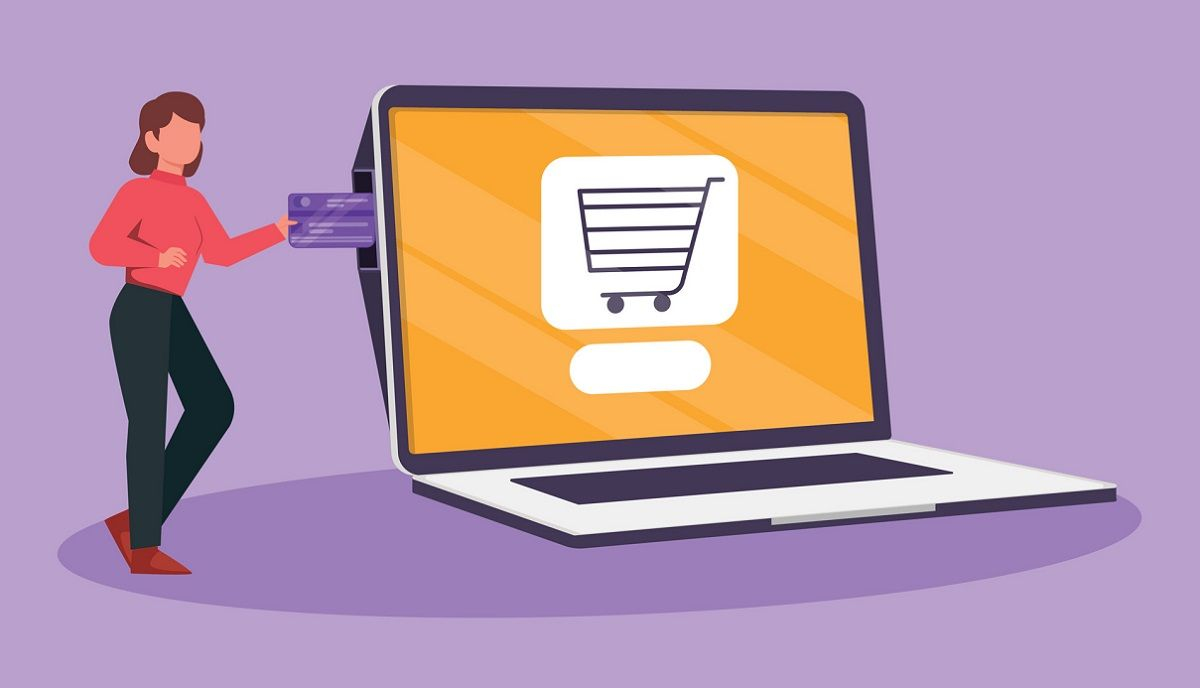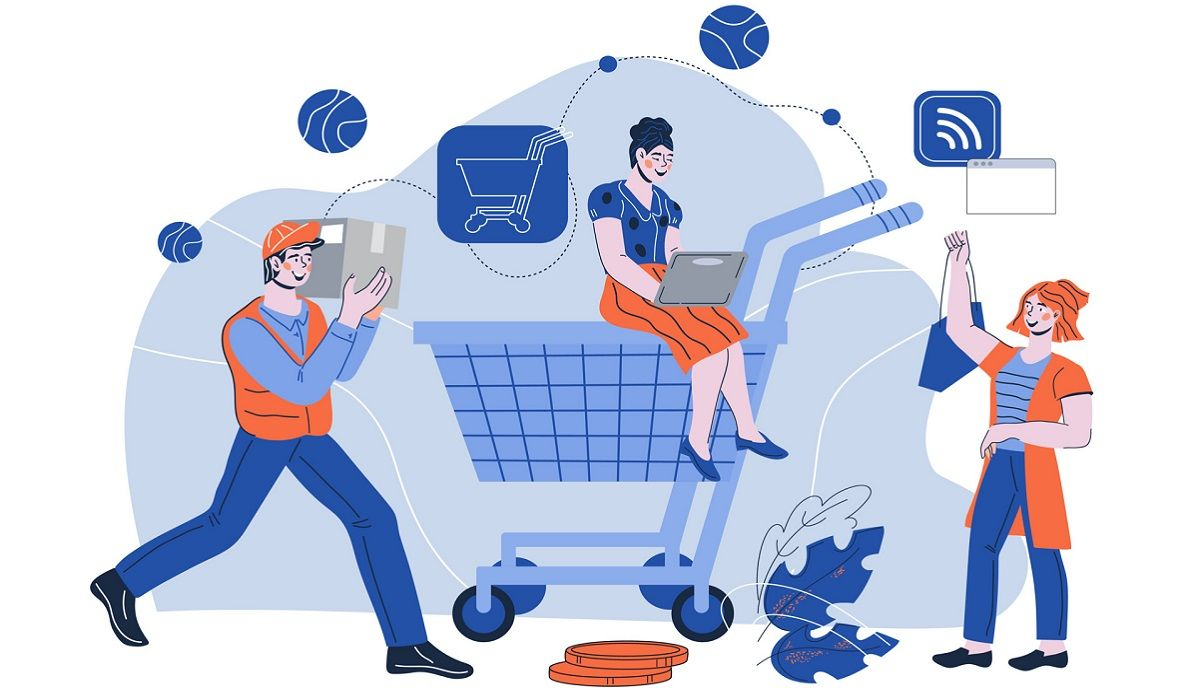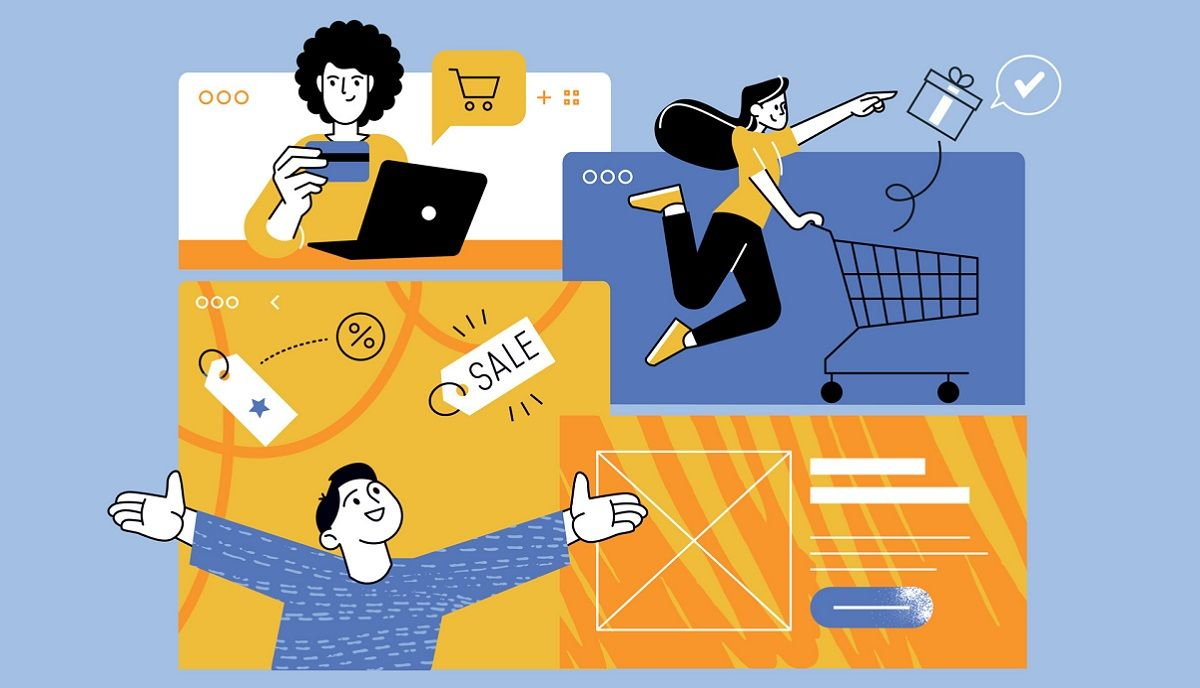Loyalty
How to Start an Ecommerce Store to Grow Your Business in 2023: Beginner's Guide
In this digital day and age, starting an ecommerce store is necessary for running a business anywhere around t...


Weekly newsletter
No spam. Just the latest releases and tips, interesting articles, and exclusive interviews in your inbox every week.
Tags
Business Growth
Authors
Daniela Andreevska
Daniela has 6 years of experience in digital marketing for ecommerce businesses.
Aws Alnabulsi
Aws is the Co-Founder of Coretava, a complete retail ecommerce growth platform. He has 6+ years of experience in managing and growing ecommerce businesses.
Carlos Guerberoff
Head de Parcerias na Coretava. Especialista em desenvolver e fortalecer relacionamentos estratégicos. Orientado para resultados e apaixonado por construir conexões duradouras.
Henrique Letoldo
Head of Sales na Coretava. Com vasta experiência em liderança de equipes comerciais, busca constantemente impulsionar o crescimento e maximizar resultados. Apaixonado por inovação e estratégias de vendas eficazes.
Aws Alnabulsi
CEO e fundador da Coretava. Visionário e empreendedor apaixonado, lidera a equipe com visão estratégica e inovação, buscando transformar o varejo através de soluções tecnológicas.
In this digital day and age, starting an ecommerce store is necessary for running a business anywhere around the globe. Having an online store is a lucrative venture given the latest ecommerce trends and the ever-increasing number of people using the internet.
Although ecommerce online stores require hard work, creativity, and technical knowhow, they can be very worthwhile and rewarding in the long term. They are beneficial in reducing overhead costs by easing the tracking of logistics and scalability, in addition to providing the assured ability to reach a wider audience, resulting in increased sales.
This article offers a streamlined step-by-step guide to starting your online ecommerce store, the benefits that come with it, possible costs you may encounter along the way, and tips for setting up the best ecommerce store.
We’ll also explore how implementing Core Loyalty can be essential for ecommerce store development.
Table of Contents
- What Is an Ecommerce Store?
- 6 Benefits of Setting Up an Ecommerce Store for Your Business
- How to Start an Ecommerce Store in 8 Easy Steps
- How Much Does It Cost to Open an Ecommerce Store?
- Optimizing the Performance of Your Ecommerce Store with Loyalty
What Is an Ecommerce Store?
An ecommerce store can be defined as an alternative to a traditional storefront, where the trading of goods and services, and the transfer of money plus data to complete the sales happen via the Internet.
Post Covid-19, there has been a rise in online transactions leading to some of the biggest ecommerce store names. Some ecommerce store examples include the Shopify ecommerce store, Amazon, Apple, Skullcandy, and Nova Smart Home among others.
10 Features of the Best Online Ecommerce Stores
When setting up an online store for your business, it is vital for ecommerce marketing that you set up an ecommerce website with the right features to keep your target market engaged.
Here are 10 must-have features of the best online ecommerce stores.
- User-Friendly Navigation: Ensure that your ecommerce website design has easy-to-navigate menus to enable quick navigation through categories in order to help customers find the products they need quickly.
- High Speeds: Having your ecommerce website and individual web pages loading at high speeds is essential to sales since slow speeds make it less likely for customers to stay and shop.
- Mobile-Friendly Features: Mobile optimization in your ecommerce website design is a key feature, seeing as most customers browse ecommerce online stores on their smartphones more and more frequently.
- High-Definition Videos and Photos: Having multiple quality images of every product, a zoom-in option, and clear videos of product functionality is vital for running the best online ecommerce store.
- 24/7 Customer Service: Knowing that quality customer experience entails the provision of helpful and accessible customer service calls for the inclusion of a chatbot in your ecommerce website design, to address customer needs at any time. The increased use of AI-generated content makes this easier than ever.
- Customer Reviews and Ratings: Customers trust the reviews of other users, so you must have good ratings and positive reviews for your ecommerce website to drive sales and increase revenue.
- Deals and Discounts: Customers are more likely to purchase when they feel like they are getting a good deal or special offer for the products available on your ecommerce website.
- Order Tracking: Making it simple for customers to track the status of their order via your ecommerce website is another great feature, since from the time of adding the product to the cart, customers are often wondering when their package will arrive.
- Multiple Payment Options: Offering multiple payment methods in the shopping cart improves the chances of sealing the deal in the final checkout process, hence reducing the likelihood of shopping cart abandonment.
- Related Product Links: This is an effective upselling strategy through which you can optimize the selling opportunity by boosting the primary sales with potential sales of associated products.
8 Types of Ecommerce Stores
Ecommerce store transactions occur either as a business-to-business (B2B), business-to-consumer (B2C), consumer-to-consumer (C2C), or consumer-to-business (C2C), depending on who is doing the buying and who is doing the selling, respectively.
Having mentioned these ecommerce business models, below are the main types of ecommerce stores:
- Dropshipping: Ecommerce dropshipping stores - via their ecommerce website - sell products to end consumers that are made and packaged by a third party for a percentage agreed upon by the manufacturer and the owners of the dropshipping website.
- White Labeling: Ecommerce stores operating under the while labeling business revenue model rebrand products purchased from a third-party manufacturer and sell them as their own.
- Subscription: Such ecommerce stores rely on encouraging customers to subscribe to a product or service, and the subscribing customers have products and services delivered at regularly scheduled intervals.
- Private Labeling and Manufacturing: These ecommerce stores carry out the manufacturing, packaging, and selling of their products directly to the consumers.
- Wholesaling and Warehousing: Wholesaling and warehousing ecommerce stores operate by turning a small profit from acting as a middleman, selling a manufacturer’s goods to a retailer or group of retailers who later sell the same products to the end consumer.
- Rent and Loan: Ecommerce stores operating on the rent and loan business model have customers only paying for the use of their products and services rather than buying them outright.
- Online Retailers: These ecommerce stores bring together products from several, separate vendors of their choosing to sell them to end customers on the website for an agreed percentage.
- Individual Brand Website: This is a vendor-specific ecommerce store committed to only selling the goods and services of one individual or one business to end consumers.
6 Benefits of Setting Up an Ecommerce Store for Your Business
Now more than ever, setting up an ecommerce store for your business is the way of the future since most people find it more convenient to shop online as opposed to shopping in a physical store.
Here are some of the major benefits you should consider when setting up an ecommerce store for your business:
- Reduced Costs: Running an ecommerce store is much more cost-effective than launching and managing a physical store. Overhead costs that could have been incurred when furnishing a physical store, paying rent for the premises, and hiring multiple workers can be avoided by setting up an ecommerce store.
- Wider Audience Reach: One of the biggest advantages of setting up an ecommerce store is the fact that it allows you to reach a wider audience than you would have experienced while running a physical store. With the worldwide global mobile users projected to reach 7.49 billion by 2025, according to Statista, the audience contacted by your ecommerce store is more likely to continue growing broader by the day.
- Ease in Getting Insight Into Customer Data: Customers are more likely to provide contact information such as phone numbers and email addresses to an ecommerce store than to physical retailers. Ecommerce stores allow you to access insights into customer data which can later be used to personalize customer experiences. Research by McKinsey shows that 76% of consumers are more likely to purchase from companies that offer a personalized shopping experience. Data can be obtained from personal information acquired from sign-up forms and feedback from customer surveys.
- Scalability: Growth in business for a physical store will require a larger storefront as well as more equipment and staff, all of which come at a cost. Scaling up an ecommerce business store is considerably easier and more cost-effective in comparison since all that is required is additional inventory, extra storage space, and a few adjustments to the ecommerce website.
- Around-the-Clock Sales: Unlike a physical store, there are no time limitations to transacting via an ecommerce store. Potential customers can shop for whatever they need no matter the time of the day, which greatly drives sales and increases revenue. According to Raydiant, most people prefer ecommerce stores over physical stores for their 24/7 availability and convenience.
- Reviews and Ratings: Reviews and ratings help the seller improve their products, services, and customer experience. The availability of reviews and ratings also allows potential buyers to learn more about the product and determine whether it is suited to their specific needs. According to research quoted by Oberlo, 54.7% of customers read at least four online reviews before deciding to buy a product.
How to Start an Ecommerce Store in 8 Easy Steps
In the business world today, every skilled entrepreneur dreams of being their own boss and more often than not, this entails running a successful ecommerce business.
Below you will discover a step-by-step guide on how to open an ecommerce store:
1. Research and Identify Your Ecommerce Business Idea
The first step of building a free ecommerce store is identifying a viable ecommerce business idea. It is important to carry out extensive research to validate your business idea, define your target market, and identify your potential products and services.
During this process, you should draw up a business plan and ask a lot of relevant questions including:
- What problems or challenges are you seeking to solve?
- Who is your target market?
- How will you get your products and services to customers?
- How much will it cost to get your ecommerce store up and running?
2. Set Up your Ecommerce Business
Once you have established your ecommerce store idea, the next step is to set your ecommerce business up for success.
This involves back-office steps such as choosing a business structure, creating a logo, naming and registering your business, acquiring a business phone number, setting up a company email address, opening up a checking account, and getting the required permits and licenses necessary to run an ecommerce store.
3. Source Your Products
As an ecommerce store builder, it is important to note that having the right products will help your ecommerce store to thrive.
At this stage, you have to determine whether your business will manufacture the products or outsource a manufacturer to provide quality products. Some of the other options for outsourcing ecommerce products include using dropshipping and reselling already existing products.
4. Set Up an Online Store and Product Catalog
Having figured out what products you are selling, sourced them, and determined your target market, the next step is to get your business up and running.
This can be done by having an in-house team of developers or outsourcing a professional ecommerce store builder to set up an online store that provides a seamless customer experience from browsing to payment processing.
This step also involves creating competitive product catalogues with top-notch product descriptions that customers will read to determine if a product will fit their needs. If you are short on human staff, you can try the capacities of the ChatGPT AI content creator for this purpose.
5. Choose the Best Ecommerce Platform
Building a successful ecommerce store can prove to be technical and complex to the layman.
An ecommerce platform is a platform where you will build and manage your online store. Choosing the best ecommerce platform makes the process of starting an ecommerce store easy and affordable.
Some of the best ecommerce platforms for various business sizes and industries include:
- Magento: Best Ecommerce Platform for Large Businesses
- Shopify: Best Overall Ecommerce Platform
- VTEX: Best Ecommerce Platform for Enterprise-Level Businesses
- WooCommerce: Best Ecommerce Platform for Small to Medium Sized Businesses
- SAP Commerce Cloud: Best Ecommerce Platform for Large Businesses
- Nuvemshop: Best Ecommerce Platform for Latin America
- Salesforce Commerce Cloud: Best Ecommerce Platform for Omnichannel Sales
- Zid: Best Ecommerce Platform for Small Businesses and Startups
6. Set Up Ecommerce Personalization
Once your ecommerce store is up and running, the next step is to use the insights from the customers’ sign-up information and feedback from surveys to set up ecommerce personalization.
This enables your ecommerce store to treat each customer like a VIP, which creates customer loyalty. Lack of ecommerce personalization often results in customers disengaging and being discouraged from buying your products.
7. Launch a Loyalty Program
Providing the customer with incentives is a great step to take when starting an ecommerce business.
Launching customer loyalty programs is necessary for customer retention and referrals which in the long term translates into increased sales and revenue.
In this regard, it is essential to deploy the Core Loyalty platform to launch different types of customer loyalty programs including points-based, cashback, VIP, and referral programs.
8. Start Ecommerce Marketing
Marketing and promoting your ecommerce business is key to your online store’s success.
Providing an omnichannel experience for your customers ensures that they are engaged with the relevant content on multiple channels while simultaneously enjoying a consistent, positive user experience.
Some of the most important ecommerce marketing channels to consider for the promotion of your store include SMS, website content, emails and social media.
How Much Does It Cost to Open an Ecommerce Store?
A 2019 report quoted by Statista discovered that retail ecommerce sales worldwide amounted to $3.53 trillion and online retail revenues were projected to grow to $6.54 trillion in 2022. These numbers have immensely influenced many businesses’ decisions to open up ecommerce stores on a global scale.
However, different costs go into setting up an ecommerce store. Setting up some ecommerce stores costs a few hundred dollars, whereas others can cost up to thousands of dollars to start.
Below are some of the infrastructure costs you must pay when opening an ecommerce store:
- Domain Name: According to GoDaddy, a domain name will typically cost you between $2 and $20 per year, depending on whether you purchase it from a private seller or an auction, and the extension you get.
- Ecommerce Software: These costs often differ depending on the ecommerce platform chosen as well as their out-of-box features, software offered, and the level of services provided.
- SSL Certificate: An SSL Certificate provides security over a network and will range in price from $20 to $70 per year.
- Ecommerce Hosting: On registering the domain name, it is important to find a web host. Although ecommerce platforms offer web hosting at different fees, self-hosting your ecommerce store ranges from $80 to $730 per month, depending on the features of the website and how much traffic the store gets.
- Store Theme and Designs: Some themes and designs may already be catered for in the fee paid to use the ecommerce platform, whereas other themes may range in price from $60 to $200 each.
- Payment Processing Costs: These will depend on the types of payments you want to offer to your customers during the checkout process. You will have to pay a fee for each gateway you want to offer, for example, Authorize.net -costs 2.9% + $0.30 per transaction + $25 monthly fee. These costs, however, do not include any charges that might come from your bank.
- Add-ons and Extensions: Add-ons, plugins, and extensions also come in at an extra cost, which varies depending on different factors.
Therefore, it is possible to open up an ecommerce store at an estimated startup cost ranging from $800 to $1,500, on average.
Optimizing the Performance of Your Ecommerce Store
We ]explored the main features of the best online stores and the benefits of setting up ecommerce stores, including reduced overhead costs, reaching a broader audience, and facilitating the getting of customer insights for ecommerce personalization. We also broke down step by step the process you can follow to launch a successful ecommerce store.
Importantly, remember that Core Loyalty can help you set up a customer loyalty program seamlessly to retain customers and boost repeat purchases.
Related Posts

Ready to Transform Your Retail Strategy?
Get a personalized consultation with our retail AI experts
Resources
Contact Us
+1 (415) 830-3900
info@coretava.com
Location
São Paulo, Brazil


